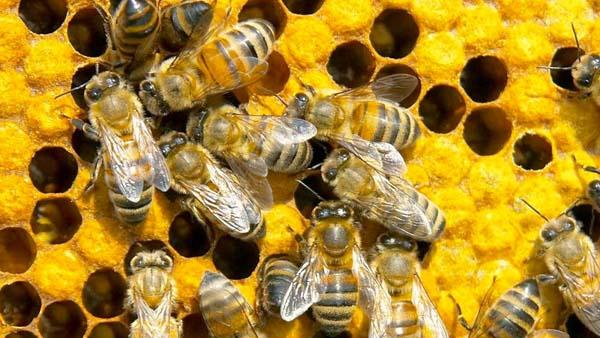Kudos to Chuck Wolsborn for speaking out.
The superintendent at Gresham Golf Course in Oregon, Wolsborn co-authored an opinion piece published in the Oregonian that called a recent municipal ban on neonicotinoid pesticides uninformed, misguided and not based in science.
 If anyone or anything ever needed a friend right now, it is the neonicotinoid class of insecticides.
If anyone or anything ever needed a friend right now, it is the neonicotinoid class of insecticides.Among the most widely used class of pesticides in the world, neonicotinoids are taking a lot of heat from some persistent environmental activist groups who want nothing short of a widespread ban on their use. Their collective desire to do away with neonicotinoids, which are popular with many superintendents, is based primarily on a phenomenon known as colony collapse disorder that some say threatens bee populations worldwide.
Those who speak out against their use often lack the science to support their claims, but instead come armed with studies widely ignored by the academic community and emotional rhetoric seeking to sway public opinion and government decision makers. Just scan the reader comments at the end of the piece written by Wolsborn, Greg Ego of Rasmussen Spray Service and Mike Coleman of Arrowhead Ornamentals for proof.
There are others, many others, who believe neonicotinoids are no more dangerous to bees than many other types of insecticides, and that education and common sense are the keys to creating harmony between man, bee and golf course. They also say neonicotinoids and bees can live harmoniously when the pesticides are used correctly. And they have science to back up their claims.
Jon Entine, a senior research fellow at the Institute for Food and Agricultural Literacy at the University of California, Davis, wrote in December a piece published in the Huffington Post that has become a seminal work in the field for those defending responsible use of neonicotinoids.
He points to how neonicotinoids were around for a decade before mature worker bees started losing their way back to the hive. He points to how bee populations are thriving despite the fact that neonicotinoids as a whole are among the most widely used insecticides on the planet. He points to the fact that their are many other chemistry classes, such as carbamates, organophosphates and pyrethroids, that are just as capable as neonicotinoids of killing bees, but have largely escaped activists' crosshairs. He points to the threat of varroa mites, which are lethal to bees, and loss of habitat.
And other scientists around the country point to his work when defending the benefits of chemistry also.
Insects are prolific breeders by nature, and it is generally accepted in the research community that even in a worst-case scenario involving exposed non-target species, the knockdown rate usually is less than 50 percent and those populations are capable of returning to normal levels within a few weeks of contact.
Detractors point to bee deaths caused by misapplications of insecticides on flowering plants and a study in which bees were subjected to pesticide unrealistically high rates of pesticides, and they prey upon an uneducated public to support their agenda.
And it works.
Despite the science to support their arguments, detractors are managing to claim victory in some key battles.
On April 1, the city of Portland, Oregon, became the latest in a short-but-growing list of municipalities to ban neonicotinoid use on city-owned land. The city owns five golf facilities and dozens of parks. The ban includes a gradual phase out of all neonicotinoids over the next two years.
Since February 2014, at least five other cities in the Pacific Northwest have banned neonicotinoid use on city property, including Eugene, Oregon, and the Washington cities of Olympia, Seattle, Spokane and Tacoma.
There are many chemistries that fall into the neonicotinoid class of insecticides, including chlothianidin, dinotefuran and imidacloprid that are used to control pests like annual bluegrass weevil, mole crickets and white grubs on golf courses.
One Portland commissioner stated during a meeting in which neonicotinoids were banned despite a lack of scientific proof "the cautious thing to do is get rid of them." Even the new city ordinance states: "Neonicotinoids kill more than pollinators - they kill beneficial insects in the garden and the soil that help manage pest outbreaks."
The rhetoric coming out of Portland is symbolic of what might lie ahead in other cities.
Several environmental groups lobbied on behalf of the ban, including Xerces Society, Audubon Society of Portland, Center for Biological Diversity and Beyond Toxics.
According to Wolsborn, et al, one Portland commissioner stated during a meeting in which neonicotinoids were banned despite a lack of scientific proof "the cautious thing to do is get rid of them." Even the new city ordinance states: "Neonicotinoids kill more than pollinators - they kill beneficial insects in the garden and the soil that help manage pest outbreaks."
A spokesman for a coalition of Oregon farmers and other pesticide users, said the city council made its decision based on fear and ideology, rather than science.
Others are caving as well.
Lowe's recently announced its plans to phase out all neonicotinoid products by 2019. The U.S. Fish and Wildlife Service has implemented a ban on neonicotinoid use on federal lands beginning in January 2016.
Amid the calls to strike down neonicotinoid use, few if any point to real science to back their claims. Those who defend neonicotinoid use, on the other hand, do cite science. They have to, because public perception is stacked against them before they begin to speak. Kudos to them for trying.

